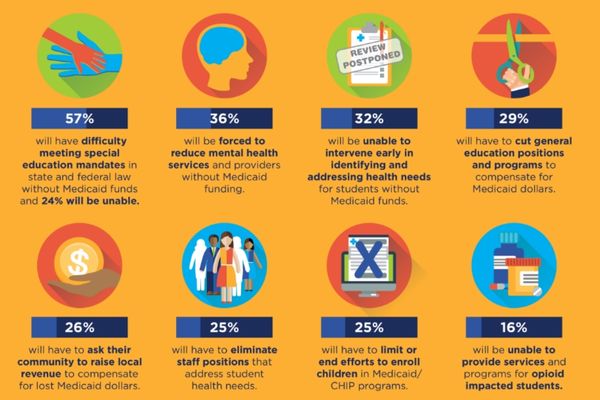Connecting Health Care to Needy Students
September 01, 2016
Executive Perspective
In October 2007, Nicholas Freudenberg and Jessica Ruglis published an article titled “Reframing School Dropout as a Public Health Issue.” Written for the Centers for Disease Control and Prevention’s Preventing Chronic Disease, they
said: “If medical researchers were to discover an elixir that could increase life expectancy, reduce the burden of illness, delay the consequences of aging, decrease risky health behavior and shrink disparities in health, we would celebrate
such a remarkable discovery. Robust epidemiological evidence suggests that education is such an elixir.”
Evidence suggests education is one of the most reliable predictors of health and the more schooling we receive the better our
personal health. Furthermore, Freudenberg, an expert on urban public health, and Ruglis contend “… investments to improve educational achievement can save more lives than medical advances.”
Stressed Youngsters
While we spend significant attention on teacher quality, pedagogy and curriculum, not enough effort focuses on the health of students, particularly those living in poverty in urban areas and who are also black or Hispanic. Health-related issues are especially
devastating on graduation rates in school systems affected significantly by adverse childhood experiences, such as substance abuse, teen pregnancy and psychological, emotional and behavioral problems.
In a recent op-ed column in The Washington Post,
Sheila Ohlsson Walker and Melissa Steel King (whose husband is John King, U.S. education secretary) described the phenomenon of toxic stress in the classroom and how a public health approach could help. King, a former teacher in New York City and
Boston, describes her experience with a young boy in her class whose parents were murdered in their apartment when he was 3. This kind of toxic stress had a profound impact on the young man’s ability to learn.
Greater collaboration
between health organizations and schools is needed to more effectively meet the needs of impacted children. This echoes the argument stated by Freudenberg and Ruglis nine years ago.
Helpful Toolkit
In 2011, AASA and the Children’s Defense Fund linked arms on a project to identify and enroll children without health insurance in the Child Health Insurance Program, or CHIP. AASA has been a proponent of educating the total child in recognition
that students come to school with needs that interfere with their learning capacity and that cannot be resolved by the school alone.
We always have recognized that health issues are a real impediment to learning. In the first year of our
work with CDF, we enrolled nearly 8,000 students in CHIP, Medicaid and other health insurance programs. The federal Departments of Education and Health and Human Services Departments both recognized the success of the program when they cited the AASA/CDF
model as a high-impact strategy and an example of how schools and health agencies should collaborate to improve both the health and education outcomes for children.
Last month, AASA and CDF released an interactive health enrollment toolkit
for schools containing lessons learned from seven urban, rural and suburban school districts that have been part of the project
over the past three years. Enrolling in health insurance and accessing health care services are complicated and can be challenging for families of immigrants because eligibility differs by type of coverage and is based on individual immigration status.
Concerns about immigration-related consequences for family members often stand in the way of securing coverage for children born in this country and eligible for coverage irrespective of their parents’ status. It is estimated that 89
percent of uncovered children are in this category. The immigration status of parents is not asked in any application for child health coverage. Schools, which are widely trusted institutions in immigrant communities, can play a critical
role in providing access to the coverage and care children need to survive and thrive.
No Time to Waste
The AASA/CDF model adds a simple question to an annual school registration or health form: “Does your child have health insurance?” Children identified through this process then are assisted with completing applications. The interactive toolkit
helps school system administrators use the health insurance outreach and enrollment program in their districts.
A social worker in the Clark County, Ga., schools shared with us the sad story of a young man who died of HIV/AIDS just five
days before his graduation from high school because he lacked the health care for which he was eligible but didn’t realize until it was too late.
It’s not too late for the 3.4 million school-age children out there who are eligible
but don’t know it.
Author
Advertisement
Advertisement
Advertisement
Advertisement




